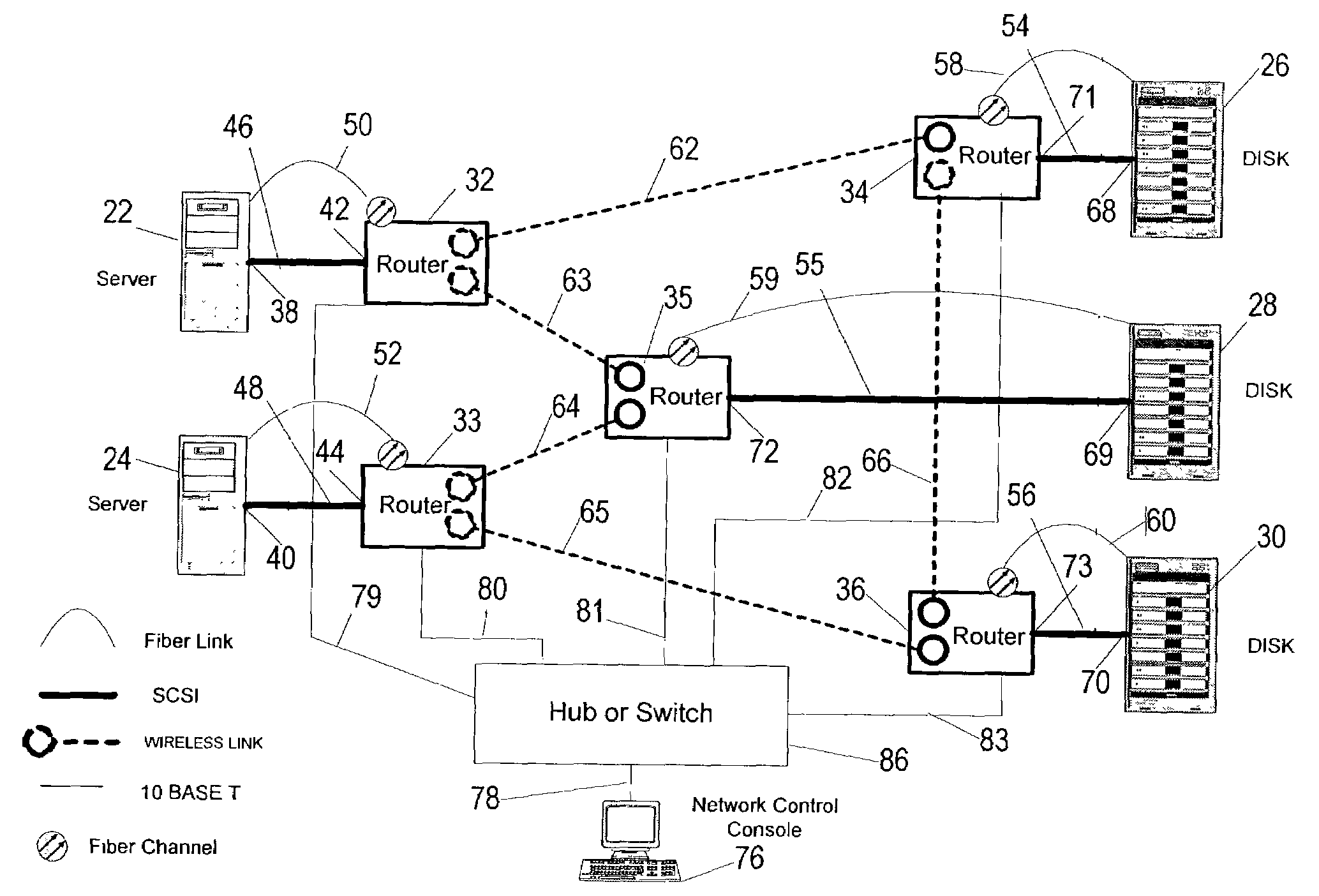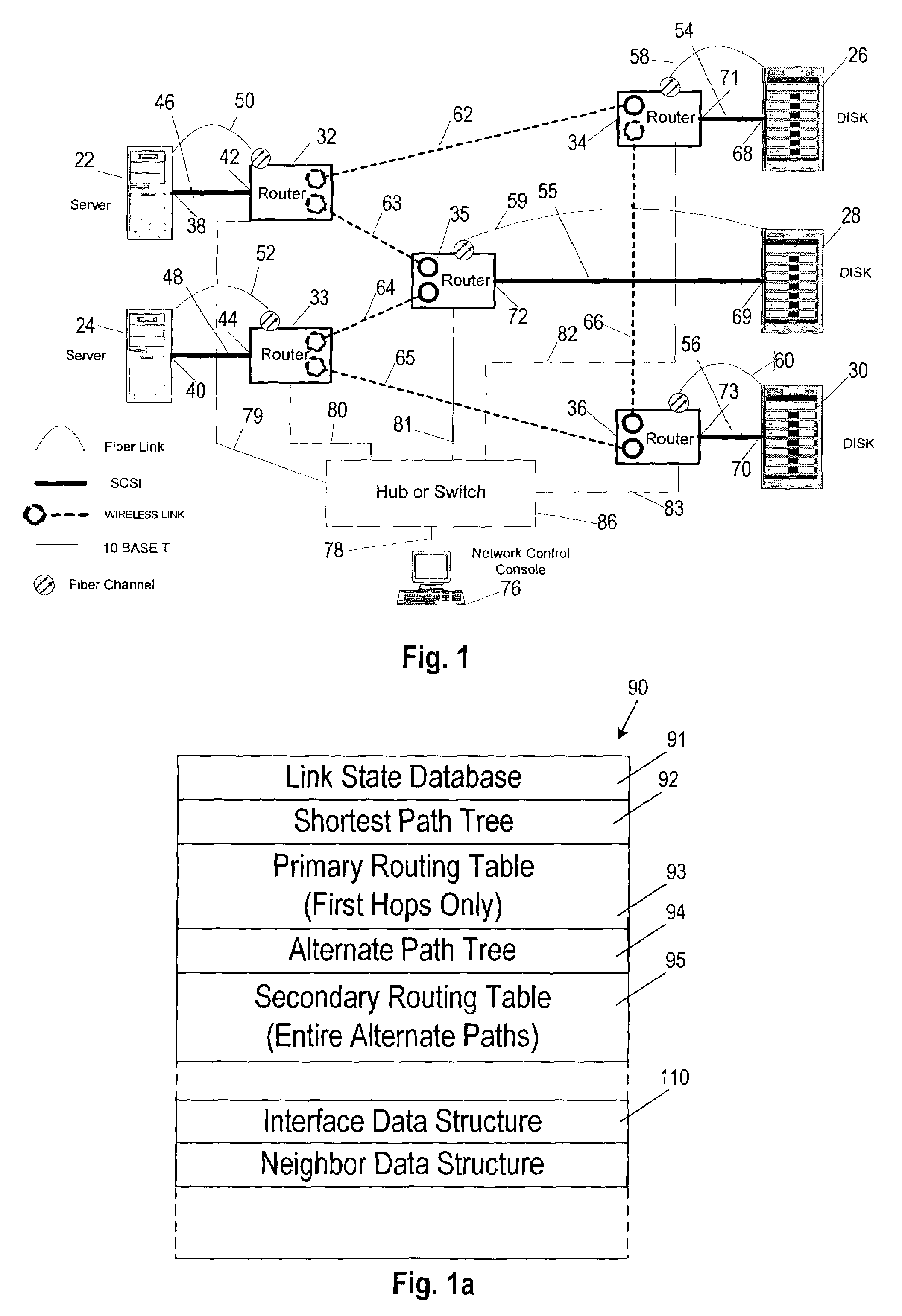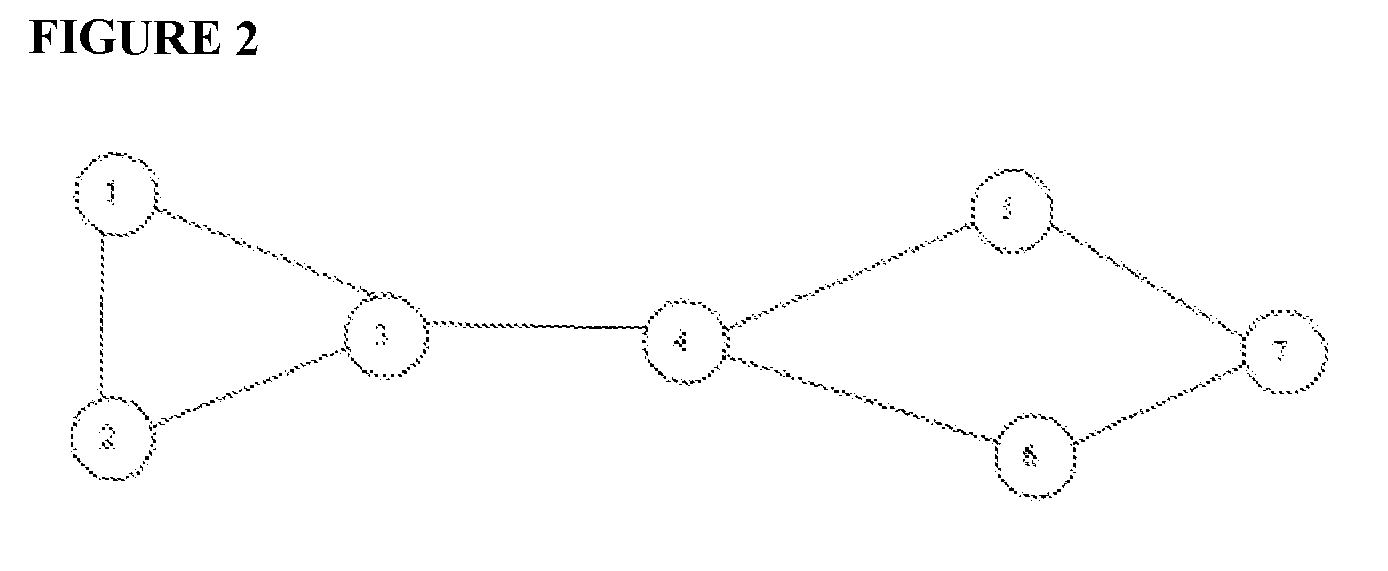Agile digital communication network with rapid rerouting
a digital communication network and rapid rerouting technology, applied in data switching networks, frequency-division multiplexes, instruments, etc., can solve problems such as low reliability, and achieve the effects of minimizing control traffic, effective use, and rapid rerouting of ip packets
- Summary
- Abstract
- Description
- Claims
- Application Information
AI Technical Summary
Benefits of technology
Problems solved by technology
Method used
Image
Examples
case 2
[0184]The first hop on the shortest path from S to Nx is not N1. In this case, Nx lies in the branch of the Shortest Path Tree of S for which the link has failed.
[0185]Two things are known:[0186]1. The packet 100 destined for D has to be tunneled only till the node Nx.[0187]2. The shortest path from S to Nx cannot be used to tunnel the packet to Nx because the link on the shortest path has failed.
[0188]After a packet 100 reaches a node in the branch of the failed link, it would get routed normally to the destination without getting into a loop. This is because the shortest path between the node, which the packet has reached, and the destination would lie within the same branch from the properties of a Shortest Path Tree. Therefore, if Nx is in the branch of the failed link, then it must be the first node in that branch on the alternate path from S to D. In this case, two levels of encapsulation 104 and 106 are used. The packet is encapsulated to Nx−1 in the first, outer level 106. I...
PUM
 Login to View More
Login to View More Abstract
Description
Claims
Application Information
 Login to View More
Login to View More - R&D
- Intellectual Property
- Life Sciences
- Materials
- Tech Scout
- Unparalleled Data Quality
- Higher Quality Content
- 60% Fewer Hallucinations
Browse by: Latest US Patents, China's latest patents, Technical Efficacy Thesaurus, Application Domain, Technology Topic, Popular Technical Reports.
© 2025 PatSnap. All rights reserved.Legal|Privacy policy|Modern Slavery Act Transparency Statement|Sitemap|About US| Contact US: help@patsnap.com



